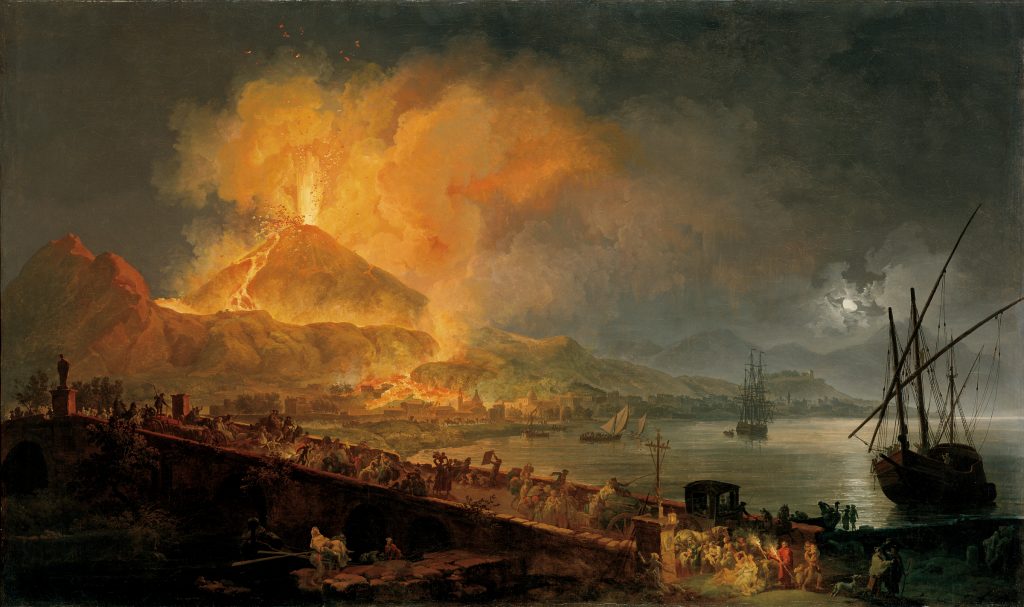Activity Idea: Eruption of Mount Vesuvius (Quick Tip)
Use the following strategies with Pierre-Jacques Volaire, The Eruption of Mt. Vesuvius
- Looking Questions [science, art]
What does this painting tell you about a volcano? How does Volaire communicate the power of the volcano to the viewer? (scale, color, details of explosion, lava flow) How would our understanding of this event be different if Volaire had chosen a different point of view? What if he had placed the volcano in the middle of the painting?
- Warm and Cool Colors [art, language arts]
Review the differences between warm and cool colors. Locate these colors on a color wheel. Choose one warm color in Volaire’s Eruption of Mt. Vesuvius. Create a word wall that lists vocabulary that this color brings to mind. Do the same for a cool color in the painting. Compare these words. Choose one of these colors and write a poem about it using the most descriptive words on the word list.
- Reporter at the Scene [art, science, language arts]
Pretend you are a reporter documenting this explosion. Interview residents fleeing the scene. Ask them to recount their experiences from the minute they first heard the explosion to the moment they reached safety. Encourage them to remember details about what the eruption sounded, felt, and smelled like. Write a newspaper article summarizing these firsthand accounts. Use the painting as your only source of evidence.
- Stages of a Volcanic Eruption [science, art, language arts]
Review the stages of a volcanic eruption. Identify the stage of this eruption. What are some warning signs these people would have felt before the eruption? How might they have responded to these warnings? Write the story or draw a scene of what might have taken place two hours before the action in this painting. Do the same for what will take place two hours after the explosion. Compare these predictions as a class.
- Mt. Vesuvius and its Eruptions [science, social studies]
Visit http://www.pbs.org/wgbh/nova/vesuvius/ and http://www.vesuvioinrete.it/e_index.htm to learn more about Mt. Vesuvius. Create a timeline charting the eruptions of this volcano. Distinguish the eruptions that were most forceful and/or destructive. Consider how the volcano has affected the people who live below it. How have they adapted to the active volcano and how might it affect them in the future? How has the natural setting adapted to the volcano? Compare photographs of the area today with this painting.
- The Sublime [language arts, art]
Edmund Burke (British, 1729-1797) called the sublime “the strongest emotion which the mind is capable of feeling.” Learn more about Edmund Burke’s definition of the sublime in A Philosophical Enquiry into the Origin of Our Ideas of the Sublime and Beautiful (1757) at http://www.wwnorton.com/nael/romantic/topic_1/burke.htm. Discuss the meaning of this term and its use in the late 18th century. Find another example of an artwork or text that exemplifies the sublime. Compare these as a class. Discuss how technology and science have enhanced and decreased our awe of nature.
- The Role of Observation in Science and Art [science, art]
Interview a scientist and artist to find out how they use observation to accomplish their goals. Compare and contrast the way they learn and use this skill.

